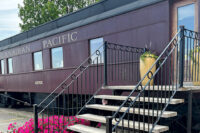Lethbridge School Division presents 2021/2022 budget
By Dale Woodard on May 20, 2021.
There were both plusses and minuses as the Lethbridge School Division presented its preliminary operating budget for the 2021/2022 school year.
The budget shows revenues of $132.51 million, which represents an approximate $3.37 million decrease from 2020/2021 operating budget. As a result of the 2.48-per-cent decrease in overall funding, just under $2.64 million in reserves is planned to be utilized next year.
Expenditures will also total $132.51 million.
On the plus side, said Christine Lee, associate superintendent of business and operations for the Lethbridge School Division, the province is providing a COVID mitigation fund as well as a reallocation for specialized learning support for kindergarten and pre-K students.
On the downside, however, was a reduction of grant rates for the plant operations and maintenance grant.
“Considering, it’s a pretty decent budget,” said Lee. “The one thing we were pleased to see that was allocated from the province was that they recognized the uniqueness of school divisions with enrollment being quite a bit less this past year due, of course, to COVID-19,” said Lee.
The Division is expected to grow from 11,249 students this year to 11,634 students next year. That’s only a partial recovery on pre-COVID-19 student enrolment levels from the 2019/2020 school year of 11,753.
“We had seen a significant drop in our enrollment in the last year,” said Lee. “So they provided COVID mitigation funding to school divisions so that we didn’t feel that impact. That was $3.4 million to us, so that was significant and important in order to kind of maintain what we have in our school division. That was very good to see and we were very pleased with that.
“We’d like to get back to pre-COVID numbers, which would have been about 11,753 students or greater. We may get there because there is a lot of growth going on in the city.”
The other positive was the adjustment for specialized learning support in relation to kindergarten as well as pre-K students.
“They did a reallocation within the funding model, but they did recognize the need to provide support for severe students in the kindergarten area as well as moderate language delay students in the pre-K and kindergarten area,” said Lee.
Plant operations and maintenance funding has decreased by $281,500 with the reduction in the grant rates. There is $220,000 of specific reserves being utilized this year to support with the grant rate reductions.
As a result, there were reductions to building maintenance to support other cost increases, such as an additional 1.0 FTE caretaking position for the new school, increased insurance costs, and maintaining supports for enhanced cleaning protocols.
“That’s one of the ways they did pay for the additional supports they provided,” said Lee. “So that was a bit of an adjustment, that’s about $300,000 to our budget that we’re having to manage. We’ll be using some one-time reserves because we are keeping some of the enhanced protocols next year because COVID will probably still be here with us in September. So we want to keep those protocols in place.”
Another piece of the funding model was the removal of the capital portion of infrastructure maintenance renewal, said Lee, a reduction of $1.8 million.
“That comes out of the operating budget, but they gave us $1.6 million in capital maintenance or renewal funding. So it removed the capital portion and moved it to another area. So it did reduce our operating budget, but it goes into another area where we apply for that funding for specialized projects. Overall, the reduction was $200,000. When people look at total dollars in operating from year to the next, it shows about a $2.4 million reduction, but $1.8 million of that is moving to a different piece of the pie. The major reduction in looking at that is the branch operations and maintenance reduction.”
In terms of staffing, the Division’s teaching and support staff are projecting a slight increase of 6.3 full time equivalents (FTE) and 8.1 FTE positions, respectively.
The opening of Dr. Robert Plaxton Elementary School resulted in additional staffing of administrators and support staff. There was also a 5.35 FTE increase in educational assistants.
“The support staff increases mainly due to the additional supports we’re receiving in the specialized learning grant,” said Lee.
With the uncertainty of student enrolment due to the COVID-19 pandemic, the Division has 25.6 FTE of unallocated contingent teaching staff to support with addressing potential “hot spots” and to support schools that have additional student enrolment growth. Administrative expenses will be maintained at just under $4.1 million in 2021/2022. Administrative costs account for 3.09 per cent of next year’s budget.
“We’re holding back some teachers for contingency,” said Lee. “The reason we do that is to make sure enrollments come in as we’ve projected. We hold that back and as we see the students come back we can allocate more staff into the classrooms as the students come back.
“If we don’t make our enrollment we get a claw back in the following year because that’s how the funding model works. We have to account for that so we don’t have a big shock in the next year. So we do hold back a little bit of money to account for that and if the enrollment comes up then we address those hot spots as they come in.”
The transportation budget increased $40,000 for 2021/2022 with fees received to support the co-ordination of bussing services with Holy Spirit Roman Catholic School Division. Over 93 per cent of the funding for the Division comes from the provincial government, while the remaining seven per cent is comprised of school fees, school-generated funds, outside grants, investment revenues and one-time reserve funds.
Follow @DWoodardHerald on Twitter
Follow @dwoodardherald on Twitter
3-2




